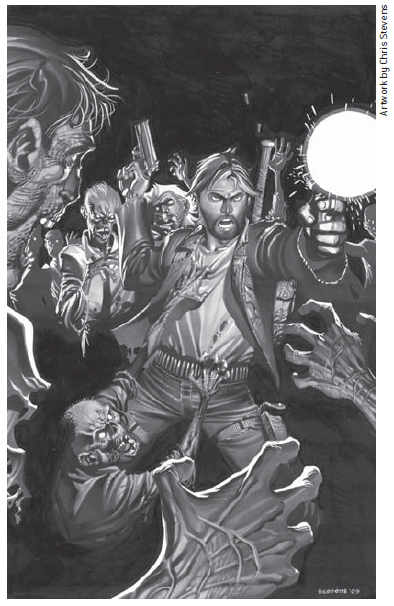Zombies (7 page)

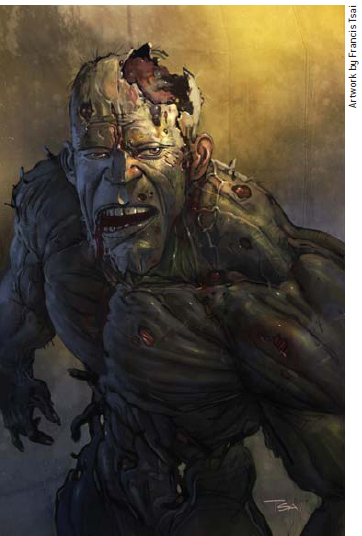
Meanwhile in America, a series of small outbreaks in California and Illinois alerted the scientific community to the fact that some new threat had arisen. With only sketchy reports and a few samples, a small group of universities worked together to found a new branch of science, Animate Necrology. While animate necrology would later encompass the study of necromancy and other varieties of the undead, it formed for the initial purpose of studying this new type of zombification. Many theories flew around in those early days. Some said it was a virus; others claimed that chemicals or radiation were eating away at the brains of the living, bringing on the appearance of death. The debate continued among this small community of scientists in America and abroad until 1968.
In 1968, an American satellite in low orbit hit a small piece of space dust and exploded over rural Pennsylvania. Over the next few days, the local press reported a spate of mass murders. The situation quickly spun out of control and the state government called in the National Guard to stabilize the situation. Officially the government has never commented on what happened in Pennsylvania in 1968, but many witnesses survived and have come forward to tell their stories.
It began in the hospitals and mortuaries. The recently dead stood up and attacked the living, stopping only to feast on those they had killed. As people died, they in turn rose up and joined the ranks of the zombies. Thousands died in less than a week,
before the soldiers and local militia formed a cordon around the infected zone and, slowly tightening the circle, killed every zombie they could find.
Pennsylvania '68 is now a rallying cry for those in the animate necrology community. It is both proof of the dangers of atomic zombies and a test case for the effective overwhelming response needed to contain and eliminate a threat. Since 1968, the world has averaged nearly a dozen atomic zombie outbreaks a year. Most of these are small, and in the developed world they are quickly handled by specialist containment teams. However, the Third World remains extremely vulnerable to outbreaks, and it is often only with the assistance of the United Nations that an atomic zombie outbreak can be contained.
The atomic blasts of 1945 left the world vulnerable to a particular form of contamination. The contamination can begin in either the air or water, but it will eventually spread from one to the other and into the ground as well. Unfortunately, the process of contamination is still only partially understood. It is a complex chemical reaction, often involving forms of extraterrestrial radiation. However, cases of contamination usually involve so many different chemical combination possibilities, that a true “source” has yet to be discovered. That, of course, assumes there is one source, and that contamination isn't achievable in multiple ways. In most cases, contamination can be traced back to the legal or illegal dumping of industrial waste combined with a particular cosmic event, although there is evidence that both have caused contamination on their own as well.
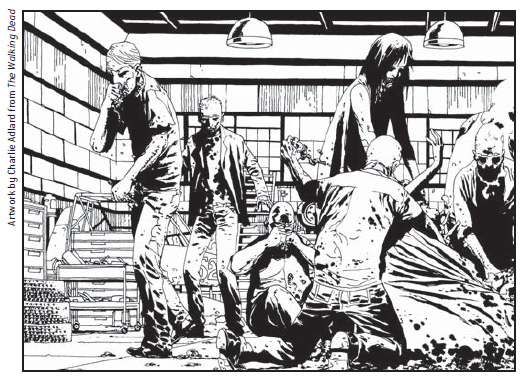
The area of contamination is highly variable, depending upon the spread of chemical waste and/or the power of radiation. To date, no charted contamination zone has covered more than 100 square miles. Thankfully, contamination zones have a limited duration. Most last only a couple of days, though a few have been known to carry on for weeks. Only the Chernobyl event has lasted more than a year, and it currently stands as the largest continuous zombie-contamination zone on record. Again, the reason behind the duration of a contamination zone is unknown. Scientists and animate necrologists rarely get to visit a “hot zone,” and the Ukrainian authorities are still refusing to let international investigators near Chernobyl.
Since the process of contamination remains obscure, it has proved impossible to predict where a hot zone might spring up. That said, once an area has become contaminated, the spread of zombification follows a predictable pattern. Unlike necromantics, atomic zombies only form from the recently dead. As a general rule, around thirty days seems the cutoff point for a corpse to be reanimated by chemical means. By then, much of the internal tissue of the body and many organs have turned to mush and escaping gases have ruptured the skin. The first to be affected in a hot zone will be the most recently dead. Hospitals usually form ground zero for an atomic zombie outbreak. One moment everything is business as usual; in the next a man who just died on the operating table gets to his feet and attacks the surgeon. Within a few minutes of the contamination, the corpses in the hospital morgue also reanimate. In less than an hour, funeral parlors and crematoriums are also affected. By the end of the day, corpses will be battering their way out of mausoleums or digging themselves up from their graves.
There is a grim irony to outbreaks commonly starting in hospitals. Not only are they places where death and corpses are common, but they are also generally full of the ill and injured who can offer no resistance to an attacking zombie. Thus a single zombie can kill numerous people in a short space of time. These victims, now part of the recent dead, will also reanimate and join the rampage. In such a way, the number of zombies caused by contamination can easily multiply in the first few hours.
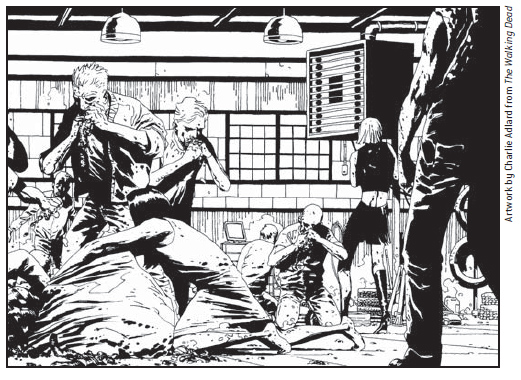
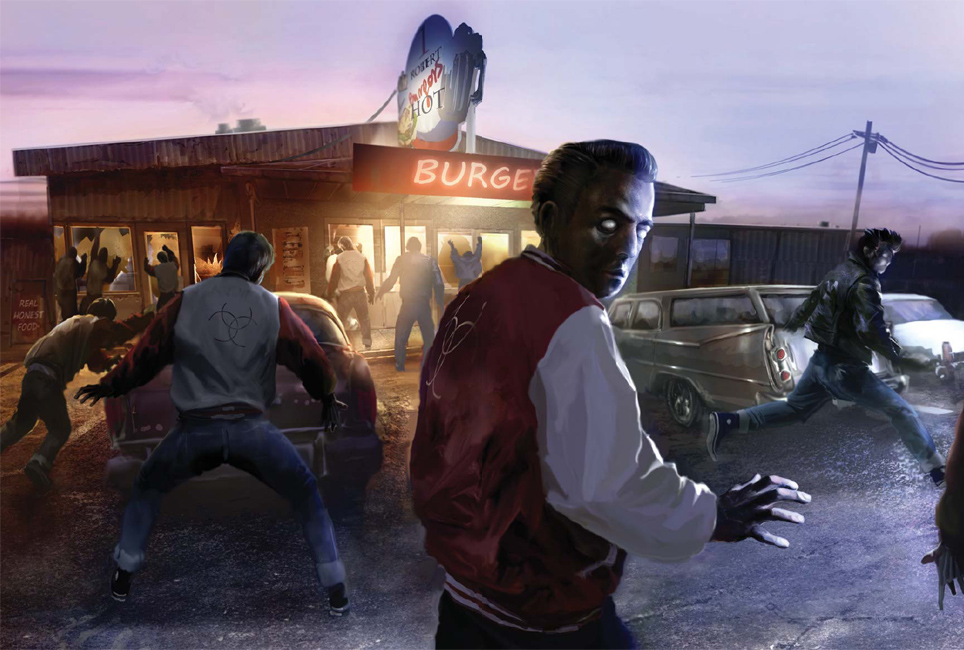
One of the first major atomic zombie outbreaks in the United States occurred just outside the city of Peoria, Illinois in the spring of 1958. The contamination began when a nearby paper mill illegally dumped several vats of industrial waste in a creek near a family-owned graveyard. Soon after, three recently deceased members of the Jeffries clan clawed their way up from their graves and wandered into the city. Over the next thirty-six hours, the hordes swelled to over 100 zombies, including most of the members of the local high school football team. Local law-enforcement and emergency services eventually contained the outbreak before military help arrived. Over 150 people died during those three days of terror, not including the Jeffries family who were dead to begin with.
Because atomic zombies were the first zombie variety commonly accepted by the modern media, they have shaped the public perception of the undead threat. If you ask most individuals on the street to describe a zombie (and they don't run away), they will most likely describe an atomic zombie. Put simply, an atomic zombie looks like an upright corpse that happens to be wandering around. They are generally deathly pale, have vacant, slack-jawed expressions, and walk with a limping, shambling gait. They will often extend their arms, groping the air in front of them, trying to grasp any living thing that comes near. Even from a distance, anyone who has any knowledge of zombies should be able to recognize them by their odd stance and movement.
Atomic zombies have only one motivating factor: the need to feed.
12
While zombies have no metabolism as such, the chemical process that animates their corpses also slowly burns at the meat and tissue that holds the zombie together. Consuming more flesh gives the chemical process an alternate fuel source that will keep the zombie going. While no exact studies have been done, it is estimated that just a small handful of flesh or a small animal like a bird will keep a zombie going for at least a day or two.
In their quest for flesh, zombies wander aimlessly until something catches their attention. Atomic zombie eyesight is incredibly poor and is based on movement. They will react to anything that moves faster than their own shuffling walk. For the most part, these zombies rely on their hearing, which remains acute even in death. They generally notice any unusual sound louder than a slight breeze and will move in the direction of the noise. The louder the sound, the quicker they react (although “quick” is a very relative term here). Atomic zombies also possess a sense of smell, though this sense has only one setting. Once they are within a few feet of a living creature, zombies
can smell it. It remains unclear exactly what scent zombies smell, though sweat remains the strongest contender.
13
The smell of living prey triggers this type of zombie's famous “moan reflex.” Those unlucky enough to have heard the moan of a zombie wish only to forget the experience. Many who have suffered from post-traumatic stress disorder relating to zombies have reported that it is the moan, more than anything else, that haunts their waking dreams. Zombies create this sound by pushing the excess gas generated by the chemical reaction up through their throats. The result is a dry, warbling groan that can be heard from several rooms away.
At first examination, the moan might seem a strange survival mechanism, as its only function is to attract other zombies toward food, thus forcing the original zombie to share. However, on further study, the moan is seen as a vital part of the zombie way of life (if you'll pardon the expression). Individual atomic zombies are slow and awkward and only able to catch the injured, frail, or particularly stupid. It is only through gathering together and attempting to surround prey that zombies can truly hope to capture their meal. The moan has such a powerful pull on zombies that they will sometimes leave a fresh kill in order to follow another moan.
